I still remember the day I saw the picture. It was in an old copy of a hunting magazine. I was 12, and the instant I saw it, I was fascinated by the curve of the ram’s horn. There was Mr. Riahi, the head of the Iranian game department posing next to a giant Urial ram. In an area known as Almeh, behind him stood Shirmamad, the well-known hunting guide in his goat wool hat. I admired the massive curls on that sheep day and night for a week; that image became ingrained in my mind as time went by. It was with me when, in my early teens, I took long shots at starlings and pigeons and magpies with my Anschutz air gun, pretending they were Urial sheep. It was with me when I left Iran, the land of the Lion and the Sun as it has been called since ancient times, at 16 on a scholarship to study ballet professionally in New York City. It was with me throughout the years when I performed for the New York City Ballet with George Balanchine, the most celebrated choreographer of the 20th century, as my boss. I was the only guy in the theater’s dressing room interested in reading Field and Stream and Outdoor Life magazines! It was with me all through my undergraduate studies and later at chiropractic college. And it has been with me in all my years of practice as a chiropractor in Boise, Idaho. It should be evident by now that I had an obsession with the Urial sheep of Northeastern Iran. The North American sheep are regal, Marco Polos are huge, but to me, the Transcaspian Urial is magical. An “Uber sheep,” the animal by which I have kept my connection to my native Iran, one of the oldest nations on our planet.
The Transcaspian Urial (Ovis vignei arkal) is found mainly in Northeastern Iran, Southern Turkmenistan, and Afghanistan. Genetic research has determined them to be the great-grandfather of all wild sheep in the world. They are extremely alert, fast runners, and beautiful. There are larger sheep in Asia and North America, but none are as well-proportioned as the Urial. The horns typically curl down and up anteriorly. In mature rams, they continue outward similar to Argalis but thinner in diameter. Their long pure white beard and bib distinguishes them from other subspecies of sheep in Iran, as well as other sheep in central Asia and North America. Their habitat is very similar to the remote Owyhee Mountains and arid foothills in Southwest Idaho. They prefer open hills and rocky canyons in high desert environments, marked by Juniper trees and low shrubs. They are extremely alert, and, having been hunted by humans for the last 25,000 years, they are hard to approach. The Urial, Altai Argali of Mongolia, and Markhor of Pakistan are the most prized trophies in big game hunting. I would argue that today, with the political atmosphere around the US-Iranian relationship, the Urial is the king of trophies. Money can buy you an Argali hunt in Mongolia or a Markhor in Pakistan. Still, no amount of money can get an American citizen into Iran, unless one is prepared to face the possible consequences.

The rams are masters of hiding in these nooks and crannies.
They say what you think about, you will bring about eventually. Call it luck, the law of attraction, or the stars lining up correctly. My friend, the late Nouri Tajbakhsh (of Texas and) world-famous taxidermist and hunter, called me late one night and asked if I was interested in a Urial sheep hunt in Iran. His habit was to call me around midnight if he had exciting news or was planning a hunting trip. “Hello,” I answered. “Shikarchieh Bozorg!” (“Great Hunter”) said Nouri on the other end of the line. He loved to call me “Shikarchieh Bozorg.” It was his way of encouraging me, much like a grandfather would call his (or her) grandson “Champ” or “Superstar.”
“How would you like to go on a Urial hunt in Iran?” At first, I thought it was a joke, but then realized he was serious. “I would love that!” But how? With what permit? And with whom? After hearing what he had in mind, I was up all night, fantasizing about the hunt of a lifetime he was going to help make possible. I weighed the risks and thought about how incredible it would be to hunt Urials in my ancient native land. I was a bit skeptical and a little nervous, but here was an opportunity, after 40 years, to make my dream come true, and I was determined to make it happen.
Nouri was unique in that he was an expert in hunting Iranian game and knew many guides and key people in Iran. He could put me in contact with them to obtain a permit for this hunt. Mr. Mostofi, a former safari organizer in Iran, was his suggestion. I spoke to Mr. Mostofi, and he assured me that he could secure a permit for a trophy Urial even though there were only a few tags given out that year. I knew this was no easy task, and acquiring a Urial permit meant many hours on the phone and many trips to the game department. In Iran, typically, any requests by domestic or foreign hunters for a sheep tag of any kind are initially answered with a no. But anyone who has dealt with Iranian government officials knows that a “no” doesn’t always mean no. Mr. Mostofi was an expert at dealing with the officials and, in time, secured a permit for my Urial as promised. “I am the only man in Iran that can get you a Urial sheep permit,” boasted Mr. Mostofi proudly on the phone from halfway around the world.
My research revealed that as a U.S. citizen traveling to Iran, there are always risks. I was born in Iran, and therefore the Iranian government does not officially recognize my U.S. citizenship — requiring me to obtain an Iranian passport to enter the country. This meant that I would enter Iran as an Iranian citizen, and should there be any “problems” there, I would be dealt with as an Iranian, and not an American. But I was determined to claim my chance at a Urial and would not be easily deterred. “Seize the day” was the phrase running in my head. I made all the arrangements and bought my ticket. My guide, Mr. Mostofi, had chosen an area called Khush Yailaq. This area is classic Urial country, but it has a unique feature in that its Northern borders are covered in lush forests and subtropical vegetation due to frequent precipitation from the clouds rolling in from the Caspian Sea to the North. Red Stags, Roe Deer, and Brown Bears are common residents of the forest. Within a two-hour drive south of the area, one can observe Goitered Gazelles and Asiatic Cheetahs in a desert setting. The semi-arid foothills in between the forest and desert are home to sheep, Ibex, and leopards. The plant and animal diversity of the area had made it necessary to protect the area. In the mid-sixties, this was accomplished, and the area was listed as protected, no grazing by domestic goats and sheep or farming allowed.
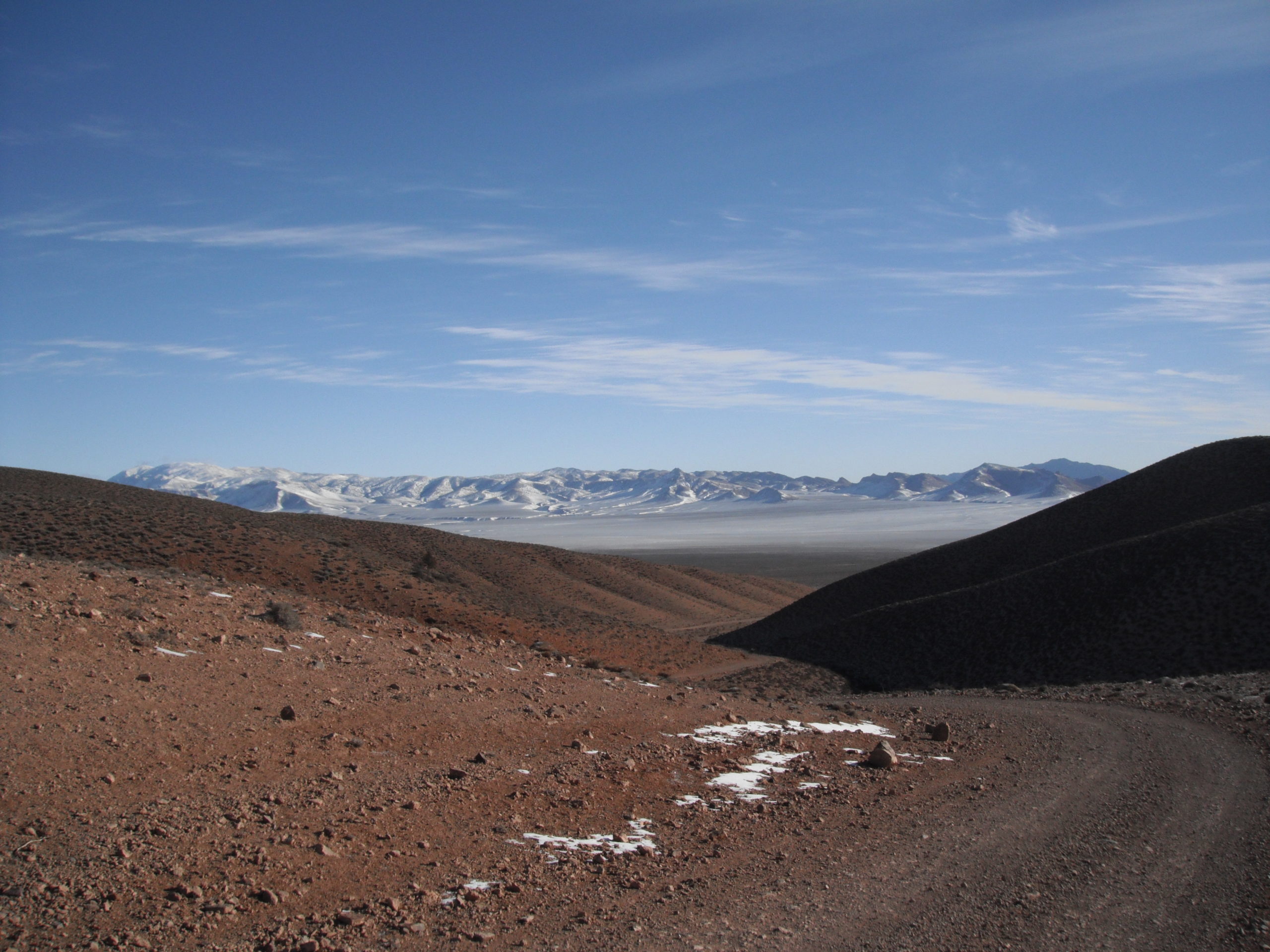
The arid high desert landscape of Khosh Yaylagh.
This made for an explosion in the game population that made this area famous with American and European hunters who frequently hunted in Iran before the 1979 revolution. However, since that time, the area has not been well managed, and game numbers have decreased. This includes wild sheep due to poaching and overgrazing of domestic sheep and goats owned by the villagers living at its borders. Nevertheless, there are still huntable numbers of sheep in Khush Yailaq. Since it was the only area that Mr. Mostofi was able to obtain a permit, I agreed to give it a try.
I arrived in Tehran in late January and spent a few days to get rid of my jet lag. I didn’t take my rifle for obvious reasons but made a trip to the range with Mr. Mostofi to sight in the 7mm Weatherby mag I was to use in my hunt. I soon found that ammunition is scarce and expensive in Iran due to the country’s embargo. With only one ammo box for the hunt and sighting in the rifle, I only fired the rifle four times to familiarize myself with the weapon. Our team consisted of a driver, Ali, Hasani, the cook, and Mr. Mostofi. We began our six-hour drive to the city of Shahrud to the Northeast of the capital Tehran. The roads, although paved, are not the safest in this part of the country. Large trucks, small cars, and pickups weave in and out of lanes, passing each other around curves (and) generally not paying much attention to safety laws. This took some getting used to since a favorite uncle had almost died in an accident on this same road while headed to the same area for a Urial hunt. Eventually, I was able to relax in my seat, realizing there is order in chaos. We visited the local office of the game department in the city of Semnan to finalize our permit and have the head game warden sign my license before heading up the rough mountainous dirt road that led to Khysh Yailaq. It was now past midnight, and since none of us had ever been to this area, we found ourselves lost and driving the wrong direction. But eventually, we were able to radio the camp personnel and get directions.
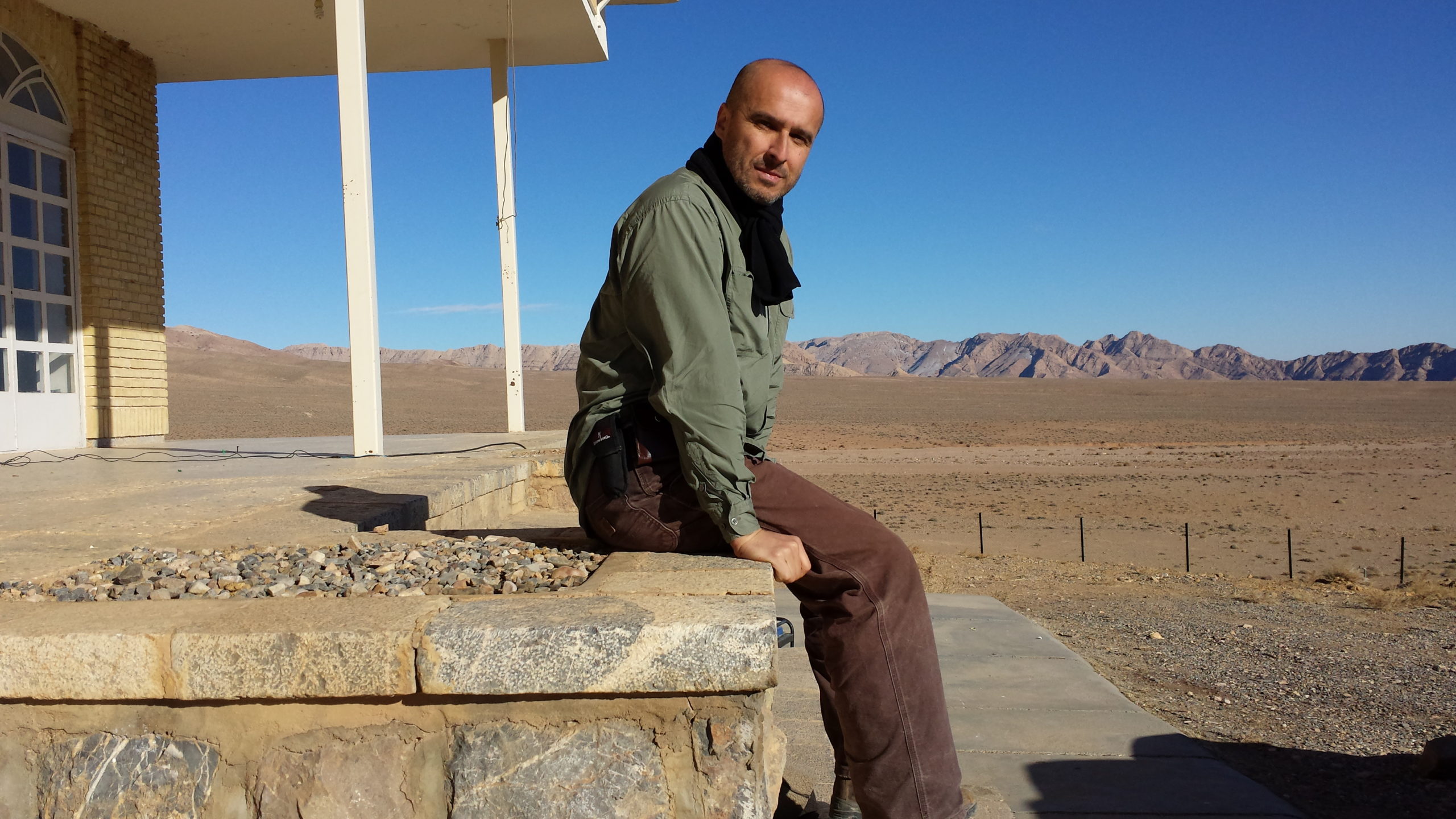
I could not believe that I was finally able to come to Iran to hunt Urials, and was sitting on a porch where many of the world’s most famous sheep hunters including Prince Abdolreza, Jack O’Connor, Jay Melon and Herb Klein had sat.
We arrived at camp tired and dusty, but glad we were finally there. The high desert air was clean, and the sky was clear, covered with millions of stars, as we unloaded our gear and supplies. When this area was declared protected by the government in the 60s lawful hunting was part of the wildlife population management tools. There was a guest house with two bedrooms, a kitchen, and showers for hunters who needed a place to spend the night. I had seen many pictures of this particular guest house in outdoor magazines and sheep hunting books, so I instantly recognized its 60’s architecture, marble porch, and the foothills behind it.
Many famous hunters had been photographed on that porch, including Jack O’Connor, Prince Abdoreza Pahlavi, Jay Melon, and many others; now, it was my turn to use that porch. There was another structure by the guest house that housed the game wardens who protected the area or tried to. Below the two buildings ran a year-round spring, which supplied the water for the two buildings. Due to the extremely cold temperatures, the pipes in our guest house had frozen solid, so we had no running water. Water had to be carried from the spring to the guest house daily in large containers for cooking and bathing. None of that seemed to bother me, however. I was in Urial country, and I was excited. During my years of big game hunting in the U.S., I had hunted elk, deer, bear, and everything in between. I am a falconer and avid chukar hunter and one of a handful of falconers in the U.S. that pursue Chukar Partridge with a goshawk. Consequently, I have camped in a variety of terrain, from sleeping on the side of a steep mountain without a tent to backpacking through the rough and tumble wilderness of Idaho looking for elk, to not sleeping at all while I hiked a mountain most of the night to be at 9,000 feet by sunrise to look for mule deer. Compared to those situations, this guest house was a castle.

The roads are good unless it rains or snows.
I woke early and found our cook already making tea and breakfast. One-by-one, we slowly crawled out of bed and sat on the carpeted floor Iranian style, with a cup of chai (tea), and we began reviewing our plan for the day. The regulations in Iran allow the hunter only three days to complete the hunt and fill a sheep tag. In the good old days, one didn’t need more than three days to find a nice ram here, but finding a good ram in three days could be very difficult now, despite the assurance from Mr. Mostofi. Poverty in the villages surrounding the area, overgrazing, and mismanagement have all caused a decline in game numbers. One warden told me he had apprehended a poacher one night during his shift and brought him in, with plans to turn him in to the authorities in the morning. When morning came, the poacher’s relatives and half of his village showed up at the guard station, breaking every window and threatening the warden’s life. Low salaries of game wardens plus such occurrences have had a big effect on officers’ motivation level in dealing with poachers, which in turn has affected game numbers. Nevertheless, each day a game warden armed with a Kalashnikov rifle had to accompany us to make sure we didn’t wound any rams, which, if not found, would be counted as a filled tag. The Kalashnikov was to protect us as well as the sheep in case of an encounter with poachers who can and will resist arrest and shoot at wardens if pursued.
On our first day, we were assigned a nice, and very much overweight game warden to accompany us, making me wonder how he would keep up. The 4-wheel drive vehicle was ready, and we all piled up. On our way to the foothills, the warden informed us that he couldn’t walk well. He suggested we leave him by the car and go after sheep without him. We agreed. The main valley through Khush Yailaq is a long valley with a terrible road beginning in the desert floor and extending to the northern mountains where the subtropical forest begins. After only a short ride, a band of sheep with a single ram was spotted on the mountain above the road. I had expected a physically challenging hunt and never pictured finding rams from the road. When everyone got out of the vehicle to look at the band of sheep 200 yards above us, I dragged behind. I didn’t want to shoot the first ram of the day and end my hunt so quickly. As the vehicle came to a stop, the sheep were already running, and, within seconds, the ram and his ewes were leaving a line of dust behind and quickly were gone over the ridge. North American game compared to these animals are very tame. Bighorn sheep, elk, and mule deer may get spooked, but eventually, they will stop and look back to see what spooked them, giving the hunter a chance for a shot. Urials, on the other hand, don’t give the hunter that opportunity. The sight, smell, or sound of hunters will send them into a full gallop, and until they have run a few miles and passed a few canyons, they will not stop to look at anything. The ram was a seven-year-old with full curls, but I knew there were bigger rams there.
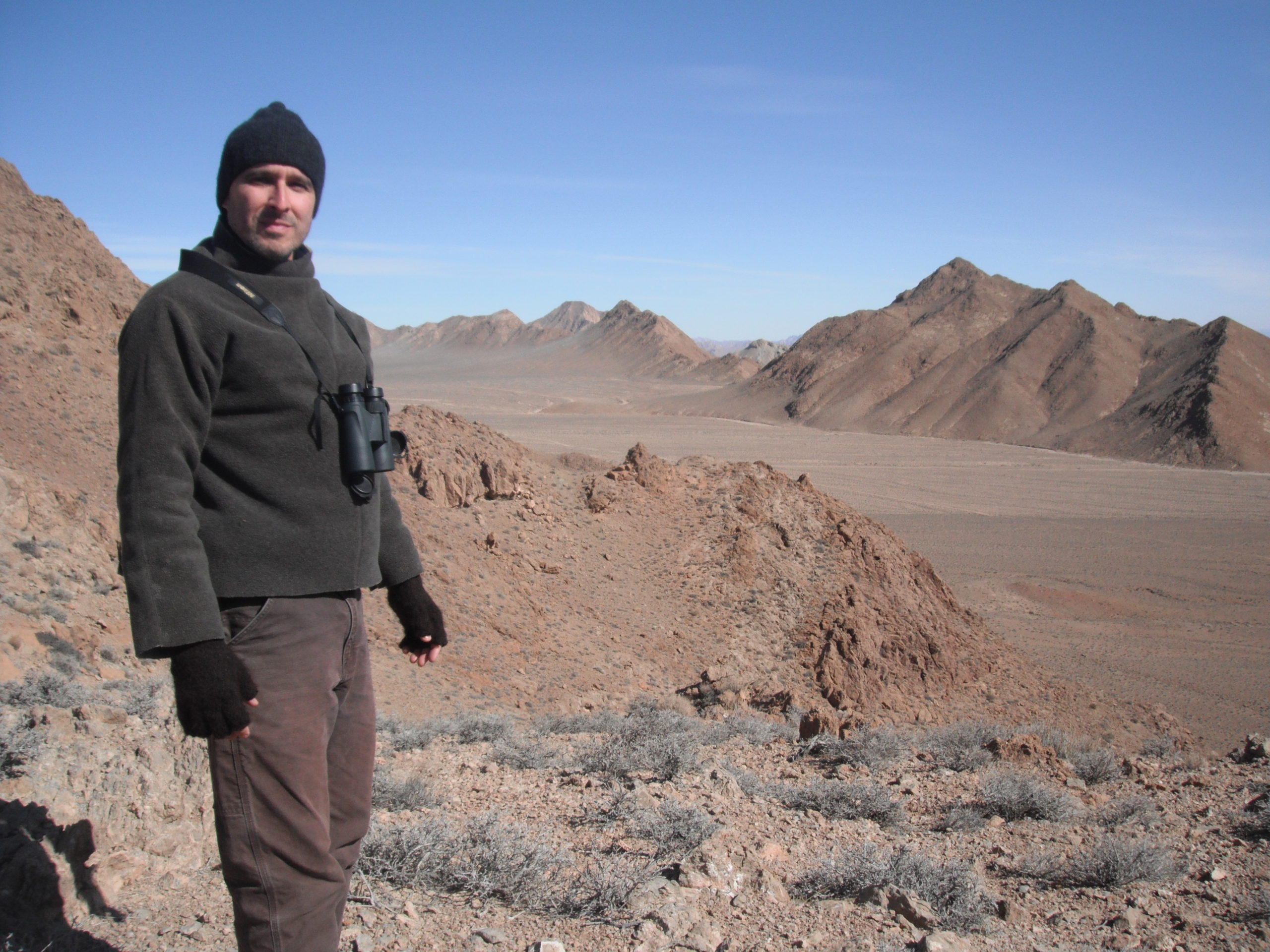
Yours truly on a small precipice above the desert floor.
The plan was to drive as far as we could, leave the car, and hike up and glass the area. As the elevation increased, we began to see snow, and eventually, there was a foot of snow surrounding us. Our driver Ali was experienced and had driven in deep snow before, but we got stuck crossing a snow-covered creek bed. Everyone was out of the car, and we all began shoveling, all except our rotund warden, who stayed in the car. It was bitter cold, and the snow was the driest I have ever seen. It was like shoveling white sand. After two hours of taking turns shoveling the powdery snow, we were able to get the vehicle out. It was now noon, and we decided to drop down to lower elevations below snow line. On the way down, a lone ram was spotted at the bottom of a canyon. I decided to investigate this ram since it looked promising from a distance. He had already spotted us, so I snuck out of his view, leaving my companions where they stood above the ram to distract him. Running as fast as I could, I hid behind a rock and peeked over the edge of the canyon. He was still standing on the edge of a smaller lower canyon at about 300 yards, ready to dive in and disappear. Crosshairs on his shoulder, I fired and missed — the bullet hitting the dirt above him. The ram instantly dove into the canyon below and disappeared. It was a clean miss, so we didn’t check for blood. I tried to blame this on the fact that I had only fired that rifle four times at a hundred-yard target at the range, but a miss is a miss, no matter the reason. I was disappointed, but we still had plenty of time.
On our second day, we were given a different warden. He was a young man of 20 without much experience, which meant we did a lot of hiking without seeing any mature rams. It turned out he was new to the area and didn’t know much about the sheep’s whereabouts. However, he showed us a cave that leopards often use in the winter. The days were short, and we headed back in the dark towards camp very tired, where our cook served our dinner of rice and lamb kabobs. I was beginning to feel the pressure.
Morning came, and everyone was sore and stiff, so we decided to leave camp an hour later than the previous day. Our guide this time was a gentleman around 60 years old named Mr. Mozafari. The sun and wind had aged his skin much too soon, and he could easily pass for a 75-year-old. He had been a warden in the area for a long time, which gave me hope of success. We decided to drive the lower-elevation hills, where the foothills end, and the desert floor begins. They were a series of steep cliffs above the hills where the warden had spotted a large lone ram a few days prior to our arrival. As we began glassing, he found the same lone ram grazing in the mouth of a canyon, not far from the cliffs. Although far away, through our binoculars, we could see that he had full curls. Mr. Mozafari and I began our long hike around and above the ram, which took over an hour. We reached the area the ram was last seen from above and carefully peaked into the canyon floor. No ram! Slowly and carefully, we crawled through the rocks toward the bottom. I was ready to take a running shot at close distance in case the ram was napping in the rocks below, but he was gone.
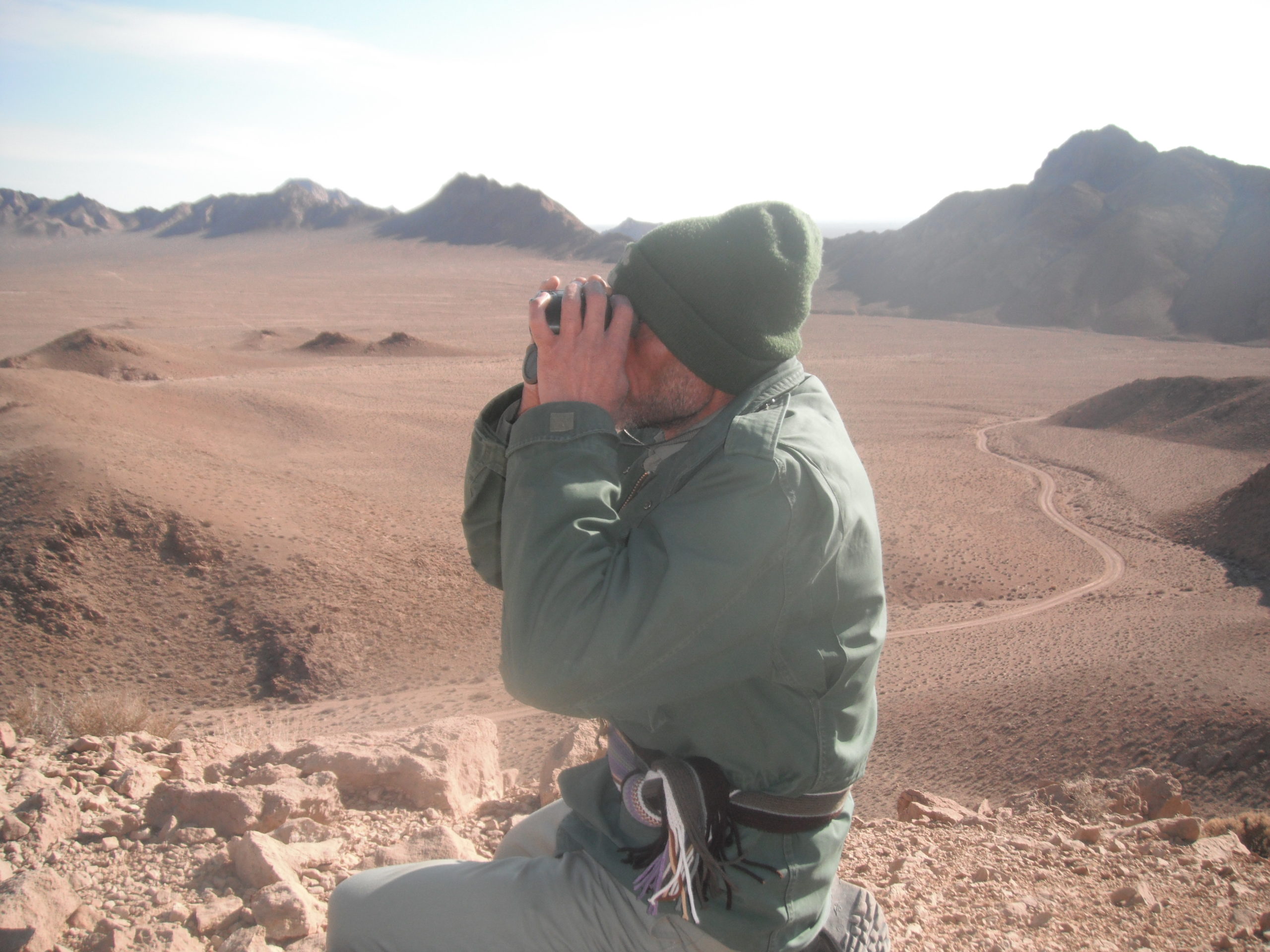
My guide glassing for Urials.
The guide pointed to the canyon and began walking rather carelessly, but I followed. As we entered the canyon, I could see a very tall cliff at the end, a 500 ft wall forming a dead end. There was a lone Juniper tree to our left and close to what seemed to be the canyon’s end. As the guide who was ahead of me peeked over the tree, I realized the canyon was not a dead end, but (it) made a ninety-degree turn left. Instantly, we saw the big ram 20 yards away. He jumped to his feet from atop a shaded flat rock to the left of the dead-end cliff, and without giving me an opportunity for a shot disappeared into large boulders above him. He was a beautiful Urial, around nine years old, with a long white beard and tight full curls. I was now very frustrated and wasn’t sure why the guide, knowing the terrain and shape of this canyon, had made a decision to carelessly walk into that ram. After discussing our approach with him, I realized that although, as a warden, he is familiar with the whereabouts of the sheep and the lay of the land, he had never hunted himself and didn’t know anything about stalking sheep.
When the Department of Environment was established to oversee and regulate hunting and fishing in Iran, there was an urgent need for game wardens to patrol the vast areas newly under protection. The solution was to hire the local poachers and offer them good wages to patrol their own hunting grounds. This worked out very well since they knew the area. They also knew all the other poachers, so they could keep an eye on the game. As a result, when a legal hunter was accompanied by one of these men, they not only had a conservation officer along, they had the best hunters in the area as their guide. Those days are now gone, and the majority of the employees here are non-hunters who don’t know as much about stalking game as their predecessors did decades ago. My lesson on the third and last day of my hunt was not to trust the warden’s ability as a hunter, but only to use their knowledge as a way to locate rams.
Time was ticking, and the sun was beginning to set when we finally were able to spot a band of sheep and were actually able to get close enough for a shot. After looking them over, I decided against shooting since none were more than 4 or 5 years old. By this time, all our hunting party members were anxious: Mr. Mostofi, Hasan, the cook, me, and especially the driver, Ali. He was worried about what his wife would say if he went home without (taking) any game meat. I was prepared to end the day and my hunt without taking any sheep unless it was an old ram, but the rest of the party argued that since I had the permit, I must shoot a ram of any size for camp meat and for Ali to take home to his wife. I certainly had not imagined this scenario and didn’t want my trip halfway around the world to turn into a meat hunt for Ali’s wife.
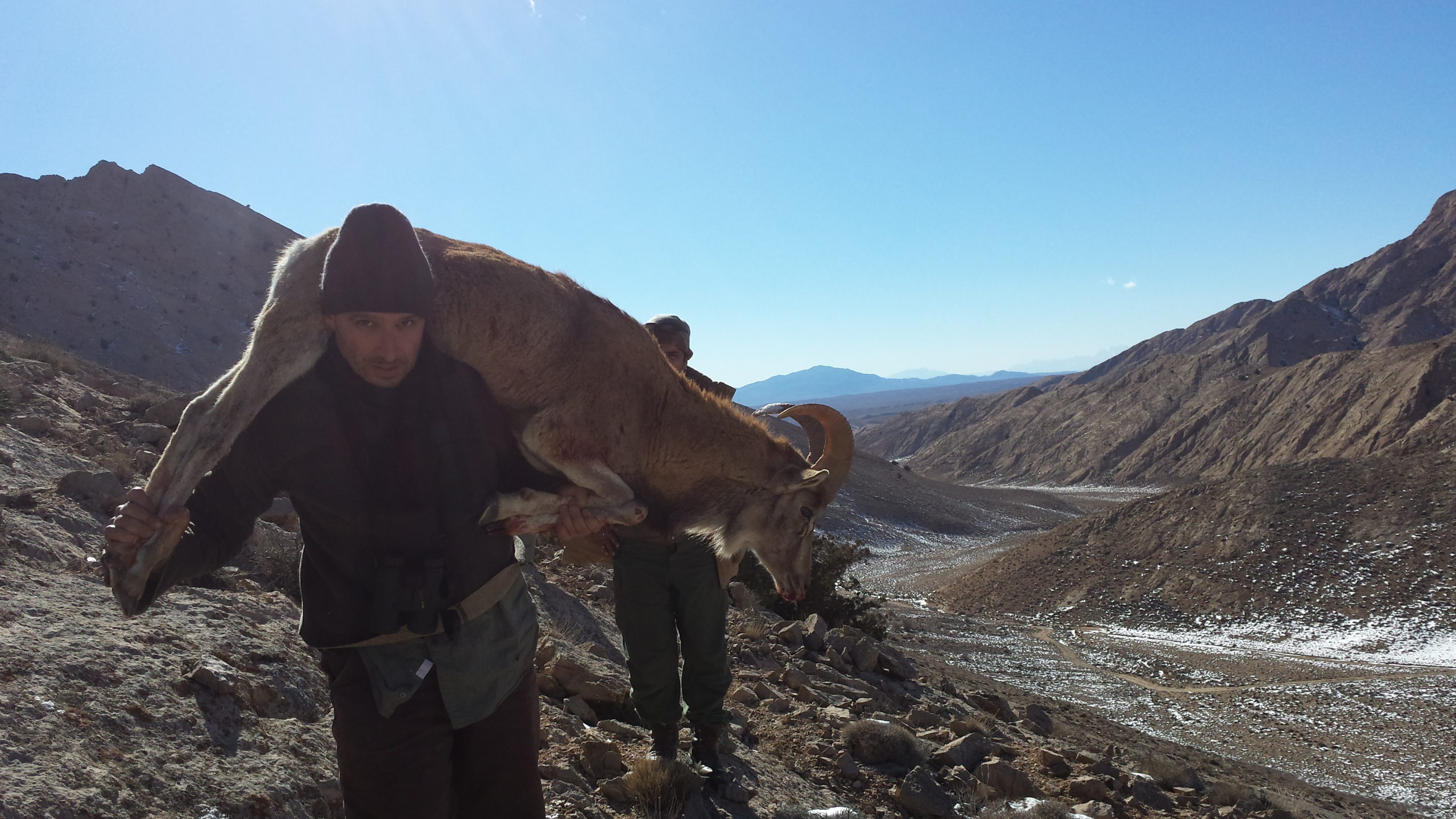
The young meat ram I killed for Ali on the last day.
With all my logical arguments, I couldn’t convince the team that was now becoming emotional due to my lack of interest in meat hunting. Then I remembered never to use logic to counter emotions since that will always lead to conflict. Soon we saw a band of small rams 300 yards above us, and reluctantly, I shot one of the young rams. Fortunately for my hunting party, the law allowed me to shoot any ram. Our party was now happy, and we shared the meat with the wardens that night. In the morning, we headed out toward the capital Tehran. Ali, the driver, was especially pleased. I had finished my first Urial hunt and had seen some amazing country most hunters will never get to see, and I had taken a starter ram.
But I was not done, and I vowed to be back in Iran for another try at a large old ram. A few months later, back home in Idaho, I received a call from Mr. Mostofi. He informed me that the small ram I had shot in Khush Yailaq was the last ram killed legally in Iran that year, and there was now a five-year ban on all hunting due to pressure from anti-hunting groups.

